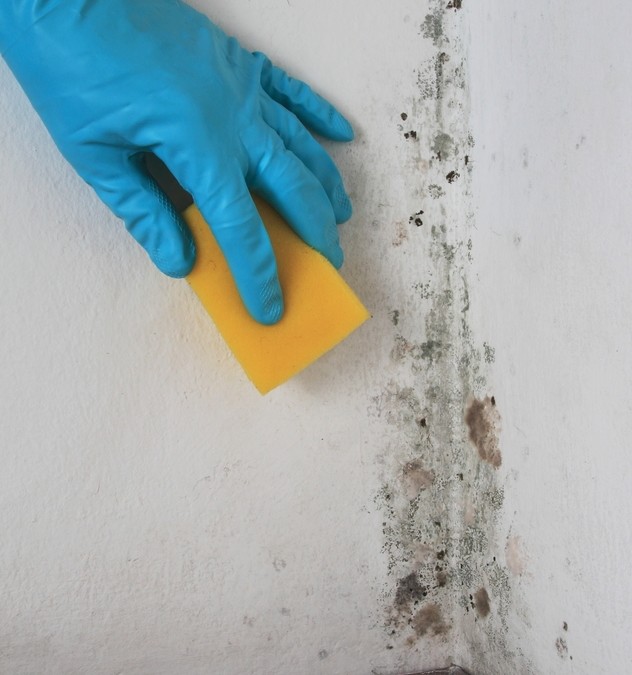
by Robert MacDougall | May 15, 2015 | Homeownership
“Bathroom mold occurs primarily because mold loves damp, dark, isolated spaces,” says Larry Vetter of Vetter Environmental Services in Smithtown, N.Y. “Typically, a bathtub, shower, or entire bathroom remains damp enough for mold growth just from showering or bathing.”
Common Causes of Bathroom Mold
- Lingering moisture caused by lack of ventilation
- Leaky toilets, sinks, and plumbing pipes
- Damp cellulose materials such as rugs, paper products, wood, wallpaper, grout, drywall, and fabric
So how do you know if you have a mold problem? Matt Cinelli, owner/operator of AERC Removals in North Attleboro, Mass., says, “If you can see it or smell it, you’ve got it.”
Finding the Mold in Your Bathroom
Bathroom mold isn’t always obvious. Check out hidden areas, such as under sinks, access doors to shower and bath fixtures, around exhaust fans, even in crawl spaces and basements underneath bathrooms.
“It could be starting in the bathroom but actually forming in another room,” says Cinelli, adding that lack of proper ventilation is the biggest culprit for mold growth.
Preventing Mold
The best defense is preventing mold from occurring in the first place. Yashira Feliciano, director of housekeeping for Conrad Conado Plaza Hotel in San Juan, Puerto Rico, offers the following tips for keeping mold out of your bathroom:
- Use your bathroom ventilation fan when you shower or bathe, and leave it on for 30 minutes following the end of your bath; if you don’t have an exhaust fan, install one.
- Keep household humidity levels below 50%; an air conditioner or dehumidifier can help.
- Use a mildew-resistant shower curtain, and wash or replace it frequently.
- Don’t keep bottles of shampoo or shower gel, toys, or loofahs in the shower, as they provide places for mold to grow and hide.
- Wash your bathroom rugs frequently.
Getting Rid of Mold
What do you do if mold growth is already a problem? As long as the infestation isn’t large, you can take remedial measures yourself:
- Strip away and replace any caulking or sealant that has mold growth.
- Clean your bathroom with mold-killing products, such as bleach, vinegar, and hydrogen peroxide.
- Open windows and doors while cleaning to provide fresh air and help dry out the mold.
If you have a problem area bigger than 10 square feet, refer to guidelines from the U.S. Environmental Protection Agency or call in a professional.
“When you see it creeping into walls and insulation, you need a professional,” says Cinelli, who notes that tearing out walls (which may be necessary for a big problem) can release mold spores into the rest of the house and create an even bigger issue.
“The idea is to kill it and then remove it,” he says. “And the most important thing is to figure out why you have it before you clean it up.”
Related:
- 6 Unexpected Places Mold Can Hide in Your Home
- What’s the No. 1 Thing People Want in Their Bathroom?
By: Deborah R. Huso:© Copyright 2015 NATIONAL ASSOCIATION OF REALTORS®
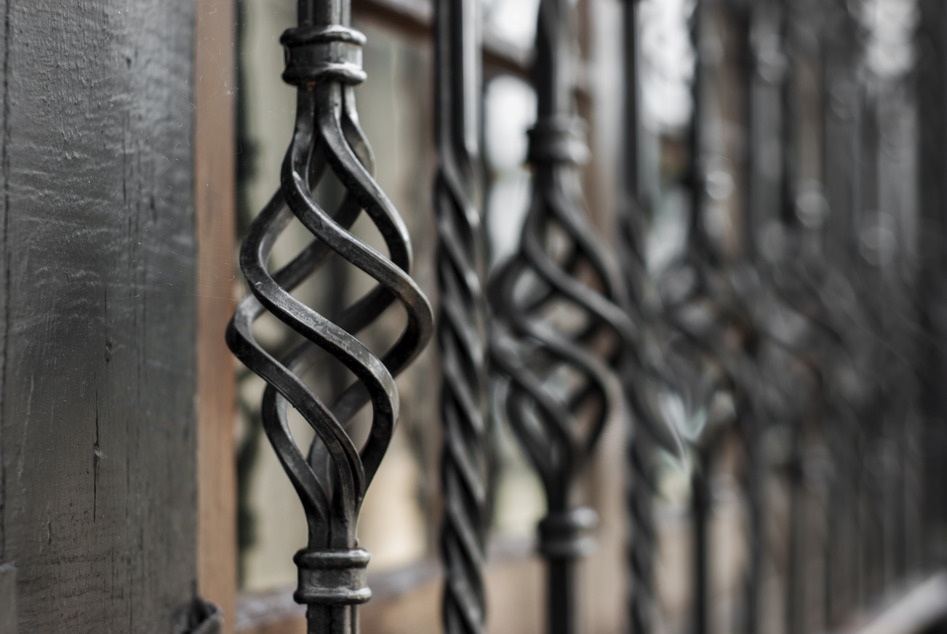
by Robert MacDougall | May 15, 2015 | Homeownership
Answer these simple questions to gauge whether anti-burglar bars may be right for you:
- Is the burglary rate high or rapidly rising in your neighborhood?
- Do you have basement or ground-level windows hidden by shrubs and outbuildings, and otherwise out of sight to neighbors?
- Do you lack confidence in the response times by local authorities when called to investigate suspicious activities?
- Has your area failed to create and maintain a neighborhood watch program?
- Are you comfortable with the look of security bars on your windows?
If your answers are yes, you’re a candidate for the structural security of burglar bars.
Bar Basics
Home security bars are basically stout metal grids that are screwed or bolted through window frames to the structural framing. The simplest DIY versions have 3 or 4 steel bars set in a metal frame and are available at home improvement centers. More elaborate versions are accented with artistic motifs and scrollwork. Custom-designed bars made by wrought-iron fabricators can cost up to $1,000 each.
There are various types:
- Permanent security bars are designed for constant, long-term use.
- Swing-away bars are hinged for cleaning the window glass or for emergency egress. They’re secured with a padlock or quick-release mechanism available only from the inside.
- Removable bars are designed to be used when bars may detract from appearances. A typical application is for small stores or residences zoned for commercial use. At night, the bars slip into place; during the day, they can be removed and stored out-of-sight.
You may find that your insurance company offers reduced rates to home owners who invest in bars and other security measures. Check with your home insurance agent.
Why Bars on Windows Work
Obviously, they prevent easy entrance into your home. But a large part of their effectiveness is psychological: Burglars prefer to work quickly, quietly, and they don’t like complications. Simply the sight of burglar bars is enough to discourage most home invaders.
Where to Install Bars
Start by installing bars on the windows that are least visible and easiest to reach. Basement windows are particularly susceptible: They’re low, and often hidden in shadows and obscured by foliage. Basement egress windows (larger windows for occupants to escape fire) typically have deep window wells that allow burglars to work out-of-sight of neighbors.
Installing Costs of Home Security Bars
Installation can be left to professionals as a whole-house project, or managed as a series of do-it-yourself jobs. For small windows, including the standard basement type, a do-it-yourself kit will cost $100 to $200 and installation will take about an hour (a little longer for the first one, a little less after you’ve done a few).
Grilles for larger windows and doors cost $300 to $500. Professional installation adds about $150 per opening plus materials. Grille components are available from security firms, some hardware stores, and home centers.
Installation process involves mounting a pair of brackets securely to framing members on either side (or above and below) your window. The structural framing members are directly behind window frames, so you’ll need screws that are long enough to reach the structural members. The bars are installed between these secure anchors.
Most local codes require security bars to have a quick-release feature available from inside the home to allow easy exit in the event of a fire or other emergency.
Interior installation complicates matters for burglars — they’ll have to go through the window first to get to the bars.
All-Around Home Security
Security bars on windows work best when used together with other home security measures.
- Motion-sensor lights click on when anyone gets too close to your house.
- Home security cameras monitor your home while you’re away, and the video streams can be viewed on a computer or mobile device.
- Home security systems protect windows and doors, and cost $250 to $700, plus a monthly fee.
By: Larry Erickson:© Copyright 2015 NATIONAL ASSOCIATION OF REALTORS®
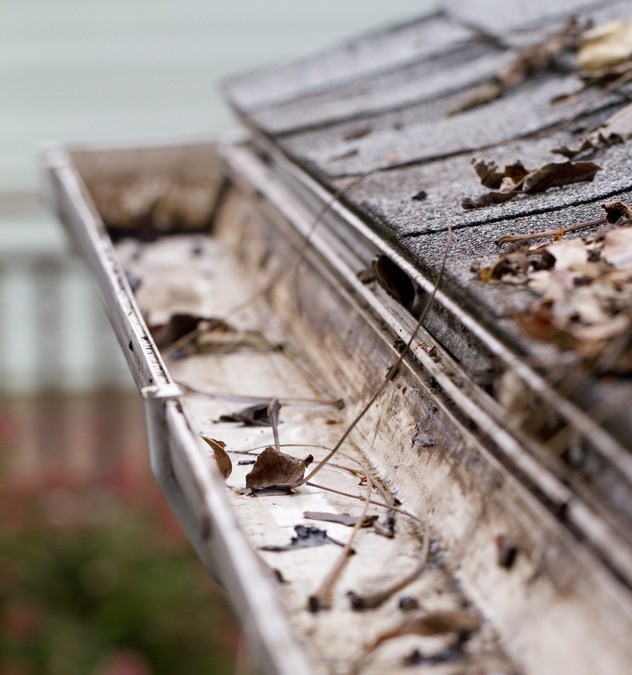
by Robert MacDougall | May 11, 2015 | Homeownership
Is My Gutter Clogged?
When it rains, here are the telltale signs of a clogged gutter:
- Water spills over the edges of a gutter.
- Water sprays like a fountain from gutter seams and elbow joints.
- Water doesn’t flow out the bottom of downspout extensions.
If it’s not raining, look for these telltale signs:
- Eroded earth directly below a gutter.
- Peeling paint on siding and fascia.
- Wet, moist, or dirty siding beneath the gutter.
- Gutters pulling away from the fascia (likely caused by excessive weight).
Where’s the Gutter Clogged?
The downspout cage, a wire strainer designed to trap debris while allowing water to flow through, is located where the downspout intersects the gutter. Often, this item is bent or out of place.
Gutter hangers and spikes often slip free from the fascia, landing in the gutter. These obstructions catch leaves and twigs, causing clogs.
Downspout elbows and seams are likely spots for clogs, too. Working your way down from the gutter, tap the outside of the downspout with a screwdriver and listen for a dull thud (as opposed to hollow ring). This will indicate the location of the clog.
If you still haven’t identified the location of the clog — and you have downspouts that descend below ground level — then the clog likely is in an underground pipe.
How to Unclog a Gutter
If the clog occurs at the downspout cage:
1. Remove and clean it.
2. Remove all the accumulated debris in the gutter.
3. If the cage is in good shape, firmly re-seat it into the downspout hole.
4. If the cage is damaged or missing, replacement screens cost just a few bucks.
If the clog is caused by loose hangers or spikes:
1. Clean debris from clogs.
2. Reposition or repair the gutter supports.
If the clog occurs at an elbow or seam — and you can reach it from above:
1. Try to free the obstruction with a stick, plumbing snake, or pressure washer outfitted with a telescoping wand.
2. If you can’t reach it, simply disassemble the downspout and remove the clog.
If the clog is below-grade, it’s the most difficult to clear, and may require excavation. But before that:
1. Remove the downspout where it enters the ground and try to clear the clog using a plumbing snake.
2. Turn on a garden hose and force it into the underground portion of the line; the water pressure may dislodge the clog.
By: Douglas Trattner: Copyright 2015 NATIONAL ASSOCIATION OF REALTORS®
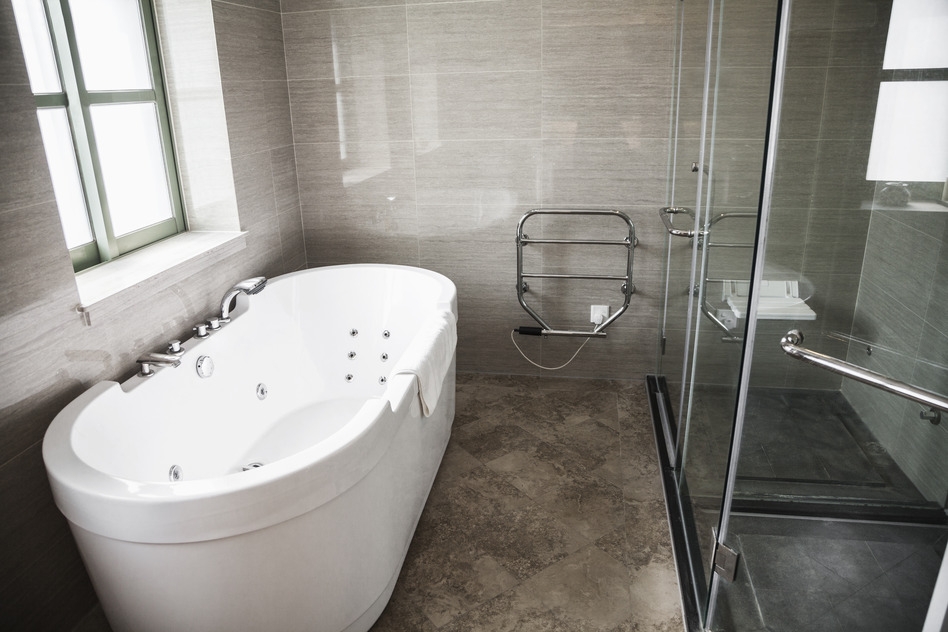
by Robert MacDougall | May 11, 2015 | Homeownership
Types of Tubs
- Alcove: This bathtub is the most common style and has only one finished side. It’s made to fit into a typical three-sided alcove that’s about 5 feet wide and 30-36 inches from front to back. Often, it’s part of a tub-shower combination. Cost: $300 to $2,000.
- Drop-in: Supported on all sides by its rim, this tub might be inserted into a raised platform or installed below floor level. Cost: $800 to $2,000.
- Freestanding: This type of tub occupies a space all its own, often as a centerpiece of the bathroom. Clawfoot tubs or tubs with bases fit into this category, as do more stylized options such as copper soaking tubs. Cost: $2,000 to $6,000.
- Corner: These tubs are designed to fit into the corner of the bathroom and usually aren’t very spacious because of their triangular shape. More often than not, a corner tub is the only option for a small bathroom. Cost: $800 for basic model.
What’s It Made Of?
- Acrylic: About 90% of bathtubs sold are made of acrylic, with good reason. Acrylic is lightweight, which makes installation easy. Acrylic is resistant to chipping and cracking, and the non-staining, non-porous surface is easy to clean. Many color options are available.
- Fiberglass: Often acrylic tubs are reinforced with fiberglass, but gel-coated fiberglass is not as common as it was 15 years ago. It’s inexpensive, but it scratches easily and is impossible to repair if chipped.
- Cast iron: Porcelain-coated, cast-iron tubs are extremely durable and good at retaining heat, but they’re also more expensive than comparable acrylic tubs. They’re extremely heavy, too, which makes installation difficult (ask your remodeling contractor if your floors need structural reinforcement to support the weight). Porcelain enamel coatings offer the widest variety of color options among bathtubs, but chipped finishes are difficult to repair.
- Enameled steel: Generally made as a cheaper alternative to cast iron, allowing the look without the cost, these tubs chip more easily.
- Copper: Although an expensive option, copper tubs can be ideal if you’re looking for something to match Victorian or rustic décor. Keep in mind that copper scratches easily and the metal achieves a patina with age.
- Stone and wood: If you’re looking to make a unique statement in your bathroom, wood and stone tubs are the way to go. However, they’re extremely expensive and difficult to clean and maintain. Plus, a wood tub is going to be prone to rotting and warping.
Features For Your Tub
Surprisingly enough, jetted bathtubs are not the rage they once were. Deb Dumel, showroom manager with Frank Webb’s Bath Center in Boston, says that’s because home owners are trying to save money and recognize that tubs, compared to showers, get less use. If they have the extra cash for features, they tend to spend it on fancy shower heads and sprayers instead.
Still interested in bells and whistles? Here are a few currently on the market:
- Walk-in tubs are either freestanding or alcove type. They include a door that seals itself as the tub is filled, and have a built-in seat. These tall tubs are made to be used in the sitting position — not reclining — and are ideal for those with limited mobility; $2,500-$6,000.
Learn more about adding accessibility and universal design features to your bathroom.
- Hydrotherapy includes soothing jets of water. The newest trend is the air bath, which emits tiny bubbles of air through small jets in the tub, providing a gentler overall body massage when compared to water-only jets. Hydrotherapy tubs run from $1,000 to $5,000, depending on the style.
- Chromotherapy is the addition of underwater lights that turn your bath water into a pool of blue, pink, or purple. The colors are supposed to help create a relaxing bathing environment. You’ll pay an extra $300-$800 for this option.
- Musical vibrations will tickle your fancy when you hook up your MP3 layer to sealed, waterproof speakers attached to the side of your tub. The acoustic bathing experience is yours as a $2,400 option.
Sizing Up Your Tub
Choosing a bathtub isn’t just about a soaking or jetted experience, and what kind of tub shape you consider fashionable. You also need a tub that suits your body — and your water heater.
“Don’t get an oversized tub you don’t need,” advises Dumel, who says she’s seen too many people buy tubs too large for their water heater to handle effectively. Here’s a quick reference guide:
- A 40-50 gallon capacity tub requires a minimum 30-gallon water heater.
- A 50-75 gallon capacity tub requires a minimum 50-gallon water heater.
- A 75-gallon-plus tub requires a minimum 80-gallon water heater.
She’s also seen women 5 feet tall purchase gigantic tubs that don’t suit their frames.
Don’t be afraid to go into the bath store showroom and sit down in the tubs, advises Dumel. You do it for your mattresses; do it for your bathtub.
By: Deborah R. Huso:© Copyright 2015 NATIONAL ASSOCIATION OF REALTORS®

by Robert MacDougall | May 11, 2015 | Homeownership
How to Remove Old Caulk in 4 Easy Steps
Step 1. Apply a caulk remover, such as 3M caulk remover or McKanica silicone caulk remover gel. Then be patient. Very patient. The directions say to wait 2 or 3 hours, but the longer you wait, the easier it will come off. Overnight is good. If it’s a particularly tough job — such as very old, hardened caulk or multiple layers — wait 24 hours.
While you’re waiting for the caulk to soften, browse our pictures of home improvements gone bad. They’ll inspire you to do the job right while tickling your funny bone.
Step 2. Use a caulk remover tool to pry the caulk loose. (See video below.) Pros use a utility knife or blade, but don’t be tempted unless your hands are as steady as a surgeon’s. Otherwise, you could damage the tub, sink, shower, or wall you’re trying to improve. Most of the caulk should come off easily in long strips, although you might need to use needle-nose pliers or tweezers to pull out some bits.
By the way, did you know that the word “caulk” originated from boat builders who needed something to seal their boats? Today, most manufacturers label home-use caulk as “sealant.”
Step 3. Using a small putty knife, toothbrush, and/or the hook end of a 5-in-1 painter’s tool (see picture below), scrape any remaining bits of caulk lose (this step, too, requires a bit of patience).
Step 4. Clean the surface using alcohol. Then kill any mold or mildew with a mixture of 1/3 cup bleach to 1 gallon of water. Allow to completely air dry (again, patience) before applying new caulk.
TIP: If you’re planning to re-caulk a tiled shower or bathtub wall, deep clean the tile before you remove the old caulk. Soap scum and other surface grime can inhibit the caulk’s ability to adhere. You don’t want water to get behind the tile and into your wall, which can create a nasty mold and mildew problem.
By: Lara Edge: © Copyright 2015 NATIONAL ASSOCIATION OF REALTORS®
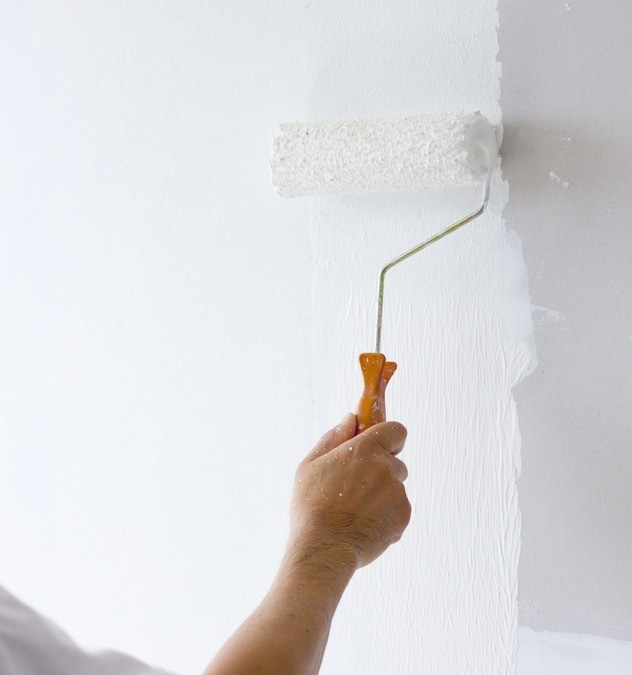
by Robert MacDougall | May 6, 2015 | Homeownership
Dirt and Grime
Dirt and grime are part of everyday life. The oil from your hands gets onto walls, cabinets, doors, and door frames. A Mr. Clean Magic Eraser ($3 for 4 pads) easily cuts through these stains. Wet the sponge and rub gently to avoid taking bits of paint off with the stain.
Or try this: Mix 1 cup ammonia, 1/2 cup white distilled or apple cider vinegar, and 1/4 cup baking soda with one gallon of warm water. Wipe the solution over walls with a sponge or cloth, and rinse with clear water. The solution won’t dull the painted finish or leave streaks.
Grease
Grease is an occupational hazard of cooking; it covers cabinets and walls and attracts dirt and dust. Any good dish soap can remove grease stains on walls. For small stains, mix 1/4 teaspoon of soap in a cup of warm water, and wipe. Rinse with clean water, and blot until dry. Clean stubborn grease stains with solution of 1/3 cup of white household vinegar with 2/3 cup of water.
Crayons
Wall erasers work like a charm on crayon marks. If they don’t do the trick:
- Rub marks with toothpaste (not gel).
- Erase marks with an art gum or a pencil eraser; use a circular motion.
- Swipe marks with baby wipes.
- Sprinkle baking soda on a damp sponge and scrub marks.
Permanent Marker
Permanent markers are tough to remove from walls. Soak a cotton ball with rubbing alcohol and dab the stain. Or spray marks with hairspray, then wipe drips.
Ink
Ballpoint ink, which is oil-based, often succumbs to foaming shaving cream, dry-cleaning solvents such as Carbona, or nail polish remover. Make sure you open windows when using cleaning solvents and polish remover.
Mildew
Mildew is a fungus that eats soap scum and body oil. To remove from walls, spray with vinegar water: 1 tablespoon white vinegar to 1 quart water. Also, try an enzyme laundry detergent; follow the pre-treating directions on the label. Blot it on the stain, and then rinse thoroughly with water.
Water Stains
After you’ve solved the problem that caused the water stains, rinse with a solution of 1 cup bleach to 1 gallon of water to prevent mold and mildew from growing. Thoroughly dry with a hairdryer or fans. If bleaching doesn’t remove water stains, you’ll have to repaint. Prime the walls with a stain-killing primer, such as Kilz Paint.
Related:
- 7 Things You Should Paint Instead of Replace to Save Money
- Repair Walls to Give Rooms a Fresh Face
By: Pat Curry:© Copyright 2015 NATIONAL ASSOCIATION OF REALTORS®





